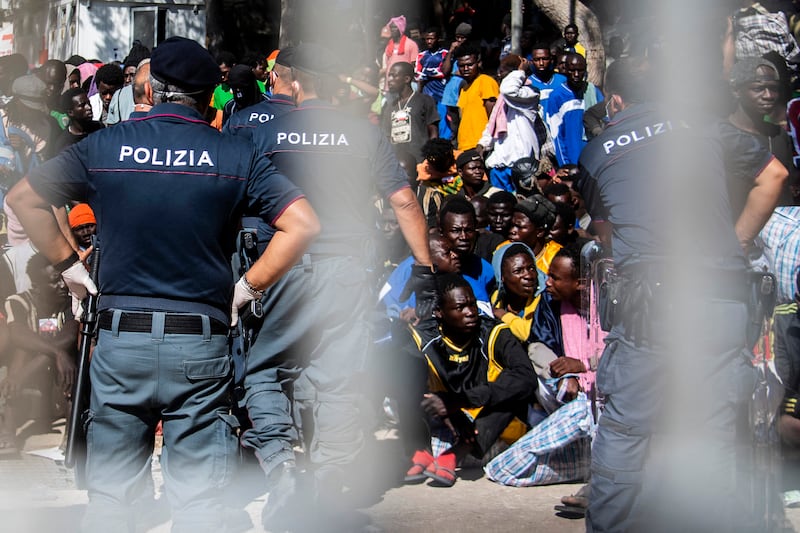Local authorities on the Italian island of Lampedusa have declared a state of emergency as 7,000 migrants arrived on boats across the Mediterranean within 48 hours, more than doubling its population.
The 20sq km island lies between Sicily and Tunisia and has been a primary landing point for people seeking to cross to Europe for more than a decade.
Mayor Filippo Mannino told local radio that the island’s roughly 6,000 permanent residents had “always welcomed” the new arrivals but that the situation had become untenable. “We have now reached a point of no return and the island is in crisis,” he said, appealing for the Italian state and European Union to intervene and swiftly transfer people elsewhere.
The island’s parish priest, Don Carmelo Rizzo, told media the island was struggling with water supplies and rubbish disposal and described the situation as “apocalyptic” as its reception centre had capacity for only 400 people. “For the new arrivals there isn’t even a place to put a bed or the possibility of going to the bathroom,” he said.
[ Fintan O’Toole: The only difference between a good migrant and a bad one is timeOpens in new window ]
There were scenes of disorder at a distribution point for food and water as waiting people surged forward in fear that there would not be enough to go around, local media reported.
The Italian Red Cross acknowledged that the high number of people was leading to “management problems”, but said police were helping to keep order.

The situation heaps pressure on the hard-right government of Italian prime minister Giorgia Meloni, who made an election pledge to stop migrant boat crossings with a “naval blockade”.
In July, Ms Meloni was among the European leaders to travel to Tunisia to mark the signing of an agreement with the EU to co-operate on curbing migration from the country. The deal provided for €105 million in EU aid to strengthen border controls and crack down on people-smuggling.
The deal came in for fierce criticism when it was debated this week in the European Parliament.
MEPs blasted the European Commission for ignoring a racist fear campaign by Tunisian president Kaïs Saïed that spurred targeted violence against black people in the country and protested that a similar deal with Libya led to the EU funding the coastguard as it perpetuated human rights abuses.
The crisis on Lampedusa has underscored that arrivals from Tunisia to Italy have increased since the agreement was signed, according to Italian figures, leading local media to dub the deal a “flop”.
So far this year 125,928 people have arrived in irregular boat crossings to Italy, in large part from the Tunisian city of Sfax, according to the interior ministry, which listed the most common countries of origin as Guinea, Ivory Coast and Tunisia followed by Egypt, Bangladesh and Burkina Faso.
“The government will do everything necessary to help the residents of Lampedusa and the migrants who continue to arrive on the island, respecting the dignity of every human being,” Italian foreign minister Antonio Tajani said in a statement. “We continue to work to stop the arrivals.”














